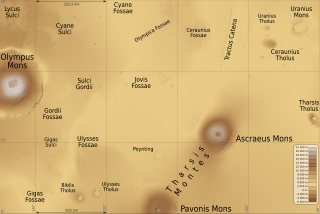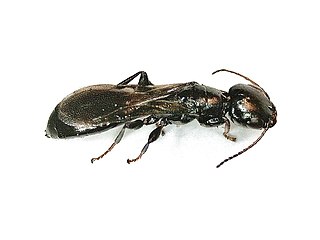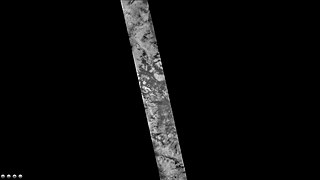Related Research Articles

Philippe Kieffer, capitaine de frégate in the French Navy, was a French officer and political personality, and a hero of the Free French Forces.

The Chironomidae comprise a family of nematoceran flies with a global distribution. They are closely related to the Ceratopogonidae, Simuliidae, and Thaumaleidae. Many species superficially resemble mosquitoes, but they lack the wing scales and elongated mouthparts of the Culicidae. An example of mosquito-resembling species is Tokunagayusurika akamusi.

The minute black scavenger flies or "dung midges", are a family, Scatopsidae, of nematoceran flies. Despite being distributed throughout the world, they form a small family with only around 250 described species in 27 genera, although many await description and doubtless even more await discovery. These are generally small, sometimes minute, dark flies, generally similar to black flies (Simuliidae), but usually lacking the humped thorax characteristic of that family.

Orthocladiinae is a subfamily of midges in the non-biting midge family (Chironomidae). For lack of a better common name, they are simply referred to as orthoclads.
Kieffer is a surname. Notable people with the surname include:

The Encyclopedia of Life (EOL) is a free, online encyclopedia intended to document all of the 1.9 million living species known to science. It is compiled from existing trusted databases curated by experts and with the assistance of non-experts throughout the world. It aims to build one "infinitely expandable" page for each species, including video, sound, images, graphics, as well as text. In addition, the Encyclopedia incorporates content from the Biodiversity Heritage Library, which digitizes millions of pages of printed literature from the world's major natural history libraries. The project was initially backed by a US$50 million funding commitment, led by the MacArthur Foundation and the Sloan Foundation, who provided US$20 million and US$5 million, respectively. The additional US$25 million came from five cornerstone institutions—the Field Museum, Harvard University, the Marine Biological Laboratory, the Missouri Botanical Garden, and the Smithsonian Institution. The project was initially led by Jim Edwards and the development team by David Patterson. Today, participating institutions and individual donors continue to support EOL through financial contributions.
Jean-Jacques Kieffer was a French naturalist and entomologist who specialised in the study of parasitic insects. Educated as a priest, Kieffer taught natural science in Bitche, Lorraine while working on the description and classification of insects. His work and publications later became a predominant source of description and classification for entomologists in the early 20th century, in particular with regard to parasitoid wasps, midges, and mosquitos.

In planetary nomenclature, a tholus is a small domical mountain or hill. The word is from the Greek θόλος, tholos, which means a circular building with a conical or vaulted roof. The Romans transliterated the word into the Latin tholus, which means cupola or dome. In 1973, the International Astronomical Union (IAU) adopted tholus as one of a number of official descriptor terms for topographic features on Mars and other planets and satellites. One justification for using neutral Latin or Greek descriptors was that it allowed features to be named and described before their geology or geomorphology could be determined. For example, many tholi appear to be volcanic in origin, but the term does not imply a specific geologic origin. Currently, the IAU recognizes 56 descriptor terms. Tholi are present on Venus, Mars, asteroid 4 Vesta, dwarf planet Ceres, and on Jupiter's moon Io.

The Cecidomyiinae are a subfamily of flies often called gall midges or gall gnats. Many are parasitoids or predacious as maggots.

The Lasiopteridi is a supertribe of flies from the family Cecidomyiidae. They are often called gall midges or gall gnats.

Chironominae is a subfamily of midges in the non-biting midge family (Chironomidae).

Chironomini is a tribe of midges in the non-biting midge family (Chironomidae).

Maximilian Kieffer is a German professional golfer who plays on the European Tour.

The Bethylidae are a family of aculeate wasps in the superfamily Chrysidoidea. As a family, their biology ranges between parasitoid wasps and hunting wasps.

Kieffer Roberto Francisco Moore is a professional footballer who plays as a striker for Premier League club AFC Bournemouth and the Wales national team.

Main is an impact crater on Mars, located in the Mare Australe quadrangle at 76.6°S latitude and 310.9°W longitude. It measures 109.0 kilometers in diameter and was named after Rev. Robert Main. The name was approved in 1973, by the International Astronomical Union (IAU) Working Group for Planetary System Nomenclature (WGPSN). The floor of Main shows dark portions which are caused by pressurized carbon dioxide blowing dust in the atmosphere in the spring when the temperature goes up. Some of the dust is shaped into streaks if there is a wind.
Joly is an impact crater on Mars, located at 74.7°S latitude and 42.7°W longitude in the Mare Australe quadrangle. It measures 79.9 kilometers in diameter and was named after Irish physicist John Joly (1857–1933). The name was approved in 1973, by the International Astronomical Union (IAU) Working Group for Planetary System Nomenclature (WGPSN).
Midnight Terror Cave is a cave in central Belize that was discovered in 2006 near Springfield. The site was worked on by California State University, Los Angeles' field school as part of the Western Belize Regional Cave Project under Dr. Jaime Awe. The cave contained around 9000 human bones, from at least 118 individuals, and is one of the largest sacrificial assemblages ever discovered in the Maya Lowlands.

Proctotrupidae is a family of wasps in the superfamily Proctotrupoidea of the order Hymenoptera. There are about 400 species in more than 30 genera in Proctotrupidae, found throughout most of the world.
Massalongia rubra is a species of gall midge which forms galls in the leaves of birch. It was first described by the French naturalist and entomologist, Jean-Jacques Kieffer in 1890 and is found in Europe
References
- ↑ "Lauterborniella - Encyclopedia of Life". eol.org. Retrieved 7 June 2022.